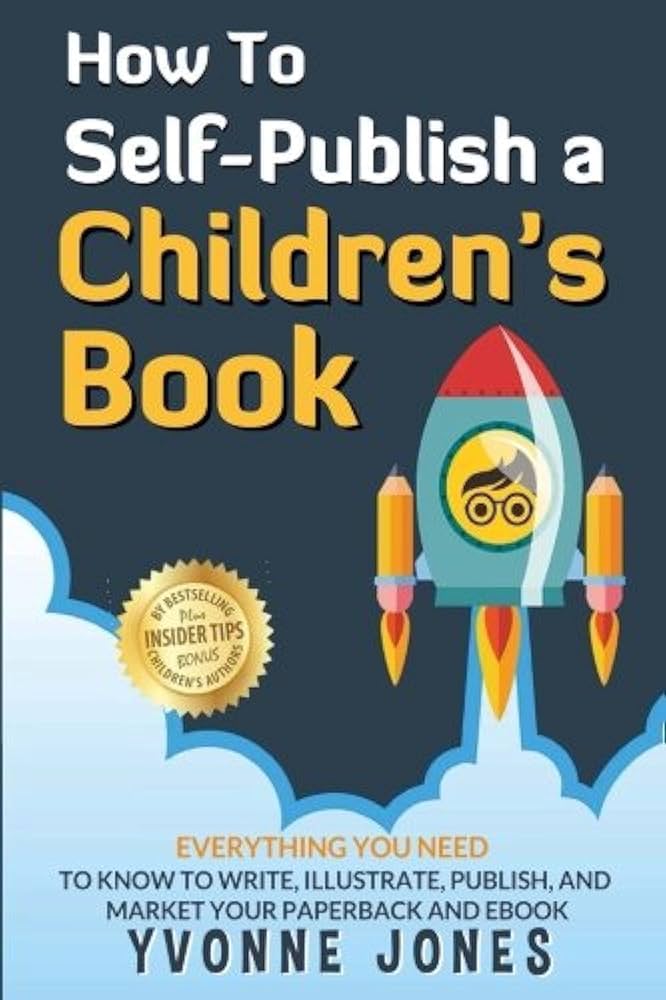Have you ever dreamed of seeing your name on a book cover? Imagine holding your own book in your hands, sharing your story or ideas with the world—without waiting for a publisher to say yes.
You can make this happen by learning how to self publish. It might sound complicated, but with the right steps, you can take control of your writing and bring your book to life. Keep reading, and you’ll discover exactly what you need to do to turn your manuscript into a real book that readers will love.
Your publishing journey starts here.

Credit: www.scribendi.com
Choosing Your Book Genre
Choosing your book genre is a key step in self-publishing. It shapes your story, style, and readers. The right genre helps your book reach the right people. It sets clear expectations and guides your writing process.
Picking a genre involves understanding who will read your book. It also means knowing what types of books sell well. This knowledge helps your book stand out in the crowded market.
Identifying Your Target Audience
Know who your readers are. Think about their age, interests, and reading habits. Are they young adults or older readers? Do they like fiction or non-fiction? This helps you pick a genre that fits their tastes.
Imagine your ideal reader. What problems do they want solved? What stories do they enjoy? Write with them in mind. This connection makes your book more appealing.
Analyzing Market Trends
Check which genres sell well right now. Look at bestsellers and popular books in stores and online. Note patterns. Are thrillers, romance, or self-help books trending?
Trends change, but some genres stay popular. Find a balance between your passion and market demand. This increases your chance of success.
Writing And Editing Your Manuscript
Writing and editing your manuscript is a crucial step in self-publishing. It shapes your ideas into a clear and compelling story. This process takes time and patience. Every author needs to focus on creating quality content. Editing helps fix mistakes and improve the flow. Both writing and editing make your book ready for readers.
Drafting Effective Content
Start by writing your ideas without stopping. Let your thoughts flow freely on the page. Focus on getting the story out first. Don’t worry about mistakes or grammar now. After finishing the first draft, take a break. Return with fresh eyes to revise your work. Cut unnecessary words and clarify confusing parts. Use simple sentences to keep readers engaged. Make sure each chapter has a clear purpose. Keep your readers interested with strong characters and action.
Hiring Professional Editors
Professional editors improve your manuscript’s quality. They find errors you might miss. Editors check grammar, spelling, and punctuation. They also help with story structure and pacing. Hiring an editor helps your book sound polished and clear. Choose editors who have experience with your genre. Ask for samples before hiring. A good editor respects your voice and ideas. Editing is an investment in your book’s success.
Designing Your Book Cover
Designing your book cover is a crucial step in self-publishing. It creates the first impression for readers. A strong cover grabs attention and shows the book’s theme. A well-designed cover can help your book stand out on shelves or online stores.
Focus on clear visuals and readable text. The cover should look good both as a thumbnail and in print. Use colors and images that match your book’s mood and message.
Creating Eye-catching Visuals
Choose images that tell a story about your book. Use bold colors to attract attention. Keep the design simple but striking. Avoid clutter or too many details. Use large, easy-to-read fonts for the title and author name. Contrast between text and background makes reading easier.
Using Design Tools And Services
Use free tools like Canva or Adobe Spark for simple designs. They offer templates made for book covers. Adjust colors, fonts, and images to fit your style. For more professional results, consider hiring a designer. Services like Fiverr or 99designs connect you with freelancers. Clear communication about your vision helps get the best cover. Check the final design in different sizes before publishing.

Credit: www.amazon.com
Formatting For Print And Digital
Formatting is key to making your book look professional. Print and digital formats need different setups. Proper formatting helps your readers enjoy the book easily. It also avoids errors during printing or on e-readers. Focus on clear layouts and correct file types for each format.
Preparing Print-ready Files
Print files must match printer requirements. Use high resolution, usually 300 dpi, for images. Set margins wide enough to avoid cutting text. Choose fonts that print clearly. Convert your file to PDF to keep layout intact. Check page size matches your chosen book trim. Include page numbers and headers or footers. Proofread carefully to catch any errors before printing.
Optimizing For E-readers
E-books need flexible layouts that adjust to screen size. Use simple fonts that display well on devices. Avoid fixed page breaks; let text flow naturally. Include a linked table of contents for easy navigation. Convert your file to EPUB or MOBI format. Test your e-book on multiple devices and apps. Remove large images or reduce file size to load faster. Keep formatting clean and simple to improve readability.
Choosing Self-publishing Platforms
Choosing the right self-publishing platform is key to your book’s success. The platform you pick affects your book’s reach, royalties, and ease of use. Several popular platforms offer different features and benefits. Knowing these will help you pick the best one for your needs.
Comparing Popular Platforms
Amazon Kindle Direct Publishing (KDP) leads in market share and global reach. It offers high royalties and wide distribution. KDP allows print and eBook publishing, with easy tools.
Apple Books is great for reaching Apple device users. It offers a clean interface and good royalty rates. The platform focuses on quality content and reader experience.
Smashwords distributes eBooks to many retailers and libraries. It offers wide exposure but has a complex setup. Smashwords works well for authors wanting multiple outlets.
Kobo Writing Life targets international readers, especially outside the US. It supports many languages and formats. Kobo offers promotional tools and flexible pricing.
Setting Up Your Author Account
Start by creating an account on your chosen platform’s website. Provide your personal details, including payment and tax information. Upload a professional profile picture and author bio. This builds trust with readers and retailers.
Next, follow the platform’s guidelines to submit your book files. Use the required formats and check for errors. Fill in book details like title, description, and categories carefully.
Review all information before publishing. Set your pricing and royalty preferences. Preview your book to ensure it looks correct on devices.
Keep your account information updated for smooth payments. Respond to reader reviews and platform messages promptly. This helps maintain a good author profile.
Marketing Your Book Effectively
Marketing your book effectively is key to reaching readers and boosting sales. A strong marketing plan helps your book stand out in a crowded market. It builds interest and trust around your work. Start by creating a clear strategy to connect with your target audience. Focus on building visibility and engaging readers.
Building An Online Presence
Create a website or blog dedicated to your book and writing. Share updates, behind-the-scenes stories, and sample chapters. Use clear, simple language to attract visitors. A professional online space makes you look credible and trustworthy. Make sure your site is easy to navigate and mobile-friendly. Collect emails to send newsletters and special offers. A mailing list keeps readers connected and informed.
Utilizing Social Media And Ads
Social media platforms help you reach many readers fast. Post regularly with interesting content related to your book. Share quotes, images, and short videos that catch attention. Engage with followers by responding to comments and questions. Paid ads on social media target specific readers by interest, location, and age. Start with a small budget and test different ads. Track results to see which ads work best. Ads increase your book’s visibility beyond your current followers.
Maximizing Profits And Sales
Maximizing profits and sales is key for any self-published author. Smart choices help your book reach more readers and earn more money. Understanding how to price your book and where to sell it makes a big difference. Small steps can lead to steady growth in sales and income.
Pricing Strategies
Set a price that fits your book’s length and topic. Check prices of similar books in your genre. A lower price can attract more buyers at first. Raise the price slowly as your book gains reviews and popularity. Use discounts or promotions to boost sales during special times.
Expanding To Multiple Sales Channels
Sell your book on many platforms, not just one. Use Amazon, Barnes & Noble, Apple Books, and others. Each platform reaches different readers. Offer print, ebook, and audiobook versions to reach more people. Use your own website for direct sales and better profit.

Credit: scribemedia.com
Frequently Asked Questions
What Are The First Steps To Self-publish A Book?
Write your manuscript, edit it carefully, and choose a publishing platform.
How Much Does It Cost To Self-publish A Book?
Costs vary but can include editing, cover design, and printing fees.
Which Platforms Are Best For Self-publishing?
Amazon Kindle Direct Publishing, IngramSpark, and Smashwords are popular choices.
How Do I Format My Book For Self-publishing?
Use simple tools like Microsoft Word or free software to format your text.
Should I Hire A Professional Editor Before Publishing?
Yes, a professional editor improves your book’s quality and reader experience.
How Can I Create An Eye-catching Book Cover?
Use clear images and simple fonts or hire a designer for a professional look.
How Do I Market My Self-published Book Effectively?
Use social media, book reviews, and connect with readers online to promote it.
Conclusion
Self-publishing lets you share your story with the world. You control every step, from writing to selling. It takes hard work and patience to succeed. Keep learning and improving your skills along the way. Remember, every author started where you are now.
Your voice matters. Start small, stay focused, and enjoy the process. Writing and publishing can bring great pride and joy. Take the first step today and see where it leads.